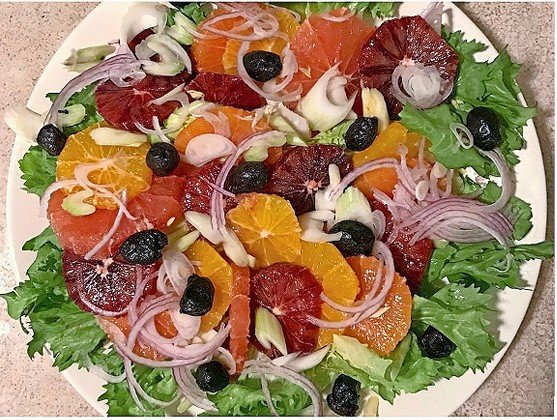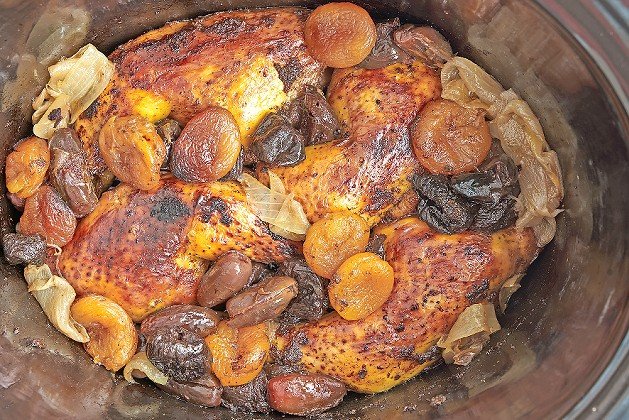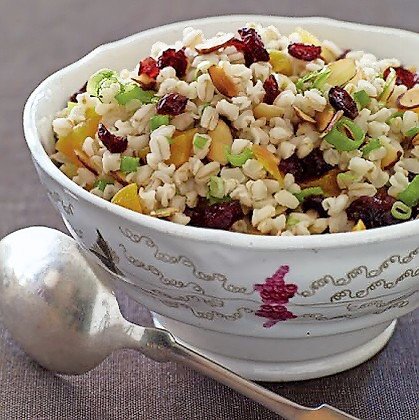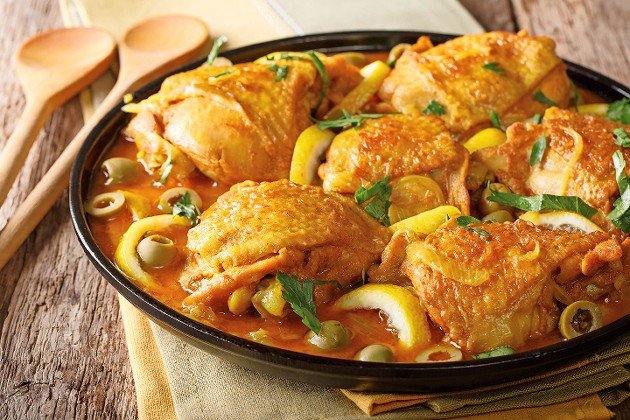Tu B’Shevat feasts go way beyond the ‘boxer’
I was about 6 and off to Sunday school to celebrate Tu B’Shevat. That’s when I learned it was a birthday party — for trees.
Well, at least there would be birthday cake? Wrong! Instead, I has handed some bark-like, inedible food that my teacher called “boxer.” I sat there trying to look happy with my “candy” (as my teacher called it) but found it hard to reconcile my idea of candy with this tasteless hardtack I attempted to chew. I quickly relegated this holiday to events like my tonsillectomy.
A few years later, I learned that “boxer” was boksor or carob, an almost chocolate-like food, and that somewhere in Israel, where spring had begun, there was now a grove of trees with my name proudly displayed on several of them. Sadly, another myth of my childhood, but I was beginning to get the gist of this holiday.
Only when I sent my children to Day School did I come to appreciate the beauty and the significance of this day that heralds spring in Israel. Tu B’Sh’vat, which we celebrated on Sunday night and Monday, is probably the most eco-friendly and vegetarian-friendly holiday we have. It focuses on foods that grow naturally from the earth and the trees; nuts and berries, olives and figs, and the grains that grow in the fields.
On Tu B’Sh’vat, we try to eat a fruit that we have not eaten since Rosh Hashanah, but with the modern conveniences of air freight and better food storage, that is often hard to do. Perhaps that is why they fed us boksor in Hebrew School — no one would actually buy that stuff. Still, a day to acknowledge the beauty of the earth and miracle of the foods that plants and trees provide is, despite my childhood experience, kind of neat given our urbanized lives and how we probably don’t think of the trees that give us the olives or where the wheat berries come from.
So, even though we have many weeks of winter left and probably more snow to endure, think about the earth and the trees and how we need to respect and take care of them so they can provide for us forever. Especially as global warming presents us with ever greater challenges. Oh, and plant a tree in Israel — even if your name won’t be on it.
Tu B’Sh’vat Salad (Pareve)
This is a salad that can include as many fruits as you like.
2 seedless oranges, Cara Cara, naval tangerines or 2 cans orange segments, drained
1 grapefruit, segments removed from membranes, juice reserved
1 bunch watercress, rinsed, dried thoroughly
1 head romaine lettuce, torn into bite-sized pieces
1 handful pitted dates, chopped
1/4 cup dried cranberries
1/4 cup walnuts, coarsely chopped
1/4 cup Pomegranate seeds
OPTIONAL: Sliced red onion, sunflower seeds, sliced toasted almonds
Divide the oranges into segments and, if large, cut in half. Cut the grapefruit in half and remove each segment from the membrane. Squeeze the juice into a cup and reserve. Place in a large salad bowl. Cut the watercress and the lettuce into bite sized pieces. Add to the salad bowl.
Add the dates, cranberries, and walnuts. Toss well. Add dressing (recipe below or your favorite) and plate each salad. Top with some pomegranate seeds on each salad. Add some of the optional ingredients, if you like. Makes 4 to 6 salads.
Sweet and Sour Citrus Dressing (Pareve)
1 tsp. celery seeds
1/2 tsp. salt
1 tsp. dry mustard
1/2 tsp. paprika
1/2 cup sugar
1 Tbsp. grated onion
1/4 cup plus 2 Tbsp. apple cider vinegar
3 Tbsp. raspberry vinegar
3 Tbsp. orange or tangerine juice
3 Tbsp. grapefruit juice
1 tsp. freshly squeezed lemon juice
3/4 cup canola oil or extra virgin olive oil
Mix the first 6 ingredients in a Tupperware-style container. Add all remaining ingredients, except the oil. Mix well. Set aside or refrigerate. Just before serving, add the oil slowly, whisking continually to make an emulsion. Add some dressing to the Tu B’Sh’vat salad just before serving. Refrigerate any leftover dressing in a tightly closed container. Makes about 1-1/4 cups.
Chicken with Dried Winter fruits (Meat)
Choose the fruits your family likes best.
2 chickens, cut into eighths
2 cups mixed dried fruits such as apricots, prunes, cranberries, currants, cherries, raisins, peaches, pears, nectarines, etc. Do not use dried pineapple or apples.
1 cup freshly squeezed orange juice
1 head garlic, cloves peeled and minced, about 1/4 to 1/2 cup minced, to taste
1-inch piece ginger, peeled, grated, about 1 Tbsp. or more to taste
1/4 to 1/2 cup dry white wine
Juice of 1 or 2 lemons, about 1/3 to 1/2 cup
2 Tbsp. dark brown sugar, more to taste
4 Tbsp. canola oil
Salt and pepper to taste
Combine the fruit and orange juice in a bowl that is large enough to eventually hold the chicken pieces also. Let sit for about 15 minutes. If some of the fruit pieces are very large, cut them into smaller pieces. In another small bowl, place the garlic, ginger, wine, lemon juice, brown sugar, and canola oil and mix well. Pour the mixture into the bowl with the fruit and mix well.
Add the chicken pieces, toss to coat, cover and refrigerate for about 3 to 4 hours or overnight, turning the pieces a few times. Arrange the chicken pieces in a roasting dish, and bake in a preheated, 375 degree oven for about an hour.
Place the chicken pieces on a platter and pour the pan juices and fruit into a serving bowl. Skim off the fat and serve.
Chicken with Olives and Lemons (Meat)
1 chicken cut into 8ths or 4 boneless skinless chicken breast halves
4 Tbsp. flour
1/2 tsp. garlic powder
1/4 tsp. salt
1/2 tsp. freshly cracked black pepper
2 to 3 Tbsp. extra-virgin olive oil
1/2 stick, pareve, trans-fat-free margarine
1/2 tsp. red pepper flakes (optional)
1 to 1-1/2 cups white wine
1/2 to 1 cup chicken stock or broth
1 cup green olives, as many olives as you like
1/4 to 1/3 cup freshly squeezed lemon juice
1 Tbsp. fresh tarragon leaves, finely minced
1/4 cup fresh flat-leaf parsley, finely minced
Garnish: 1 lemon thinly sliced
OPTIONAL: Some oregano and minced garlic
Place the flour, garlic powder, salt and pepper in a zipper plastic bag. Add the chicken pieces a few at a time and shake to coat. Place on a plate.
Heat a large Dutch oven or deep skillet and add the olive oil and pareve margarine. If you want a bit of heat, add the red pepper flakes to the oil mixture and mix well. Add the flour coated chicken pieces to the skillet and cook about 2 to 3 minutes per side, just until lightly browned. Add the wine, stock and olives and mix.
NOTE: Some people like to gently flatten each olive with the flat side of knife to help release the oils and flavor before adding them to the pot. You can, if you like.
Add the lemon juice and mix well. Partially cover and simmer about 10 minutes. Add the tarragon and parsley and mix well. Taste and adjust the wine and lemon juice, salt and pepper. Add oregano and more garlic, if you like. Cook, partially covered, until the chicken is cooked through, about 30 more minutes for chicken pieces, less for breasts. Garnish with lemon slices and more parsley. Serves 4.
Middle Eastern Sweet Wheat Berries and Barley (Pareve)
Wheat berries are unprocessed whole wheat grains. They are extremely high in fiber and their nutty, chewy texture and mild flavor blends well with either sweet or savory additions. Wheat berries must be soaked overnight prior to cooking.
1 cup whole wheat berries
1 cup pearled barley
8 cups water
1/4 to 1/3 cup sugar or honey
1/4 to 1/3 cup pure maple syrup
1 cup raisins
1/4 cup dried cranberries or fresh, chopped cranberries to give a tart flavor
1/4 cup dried fruit such as cut up dates, figs, cherries, or currants
1-1/2 cups mixed nuts such as almonds, walnuts, pistachios, pine nuts, etc.
Pomegranate seeds for garnish, if desired
OPTIONAL: Cinnamon, to taste
Bring the water to a boil and add the wheat berries. Simmer for about 30 minutes. Add the barley and simmer for another 30 to 40 minutes until the barley and berries are chewy. Drain. Add the sugar or honey and maple syrup and stir over low heat about five minutes.
Remove from heat and add the fruit and nuts. Serve warm or chilled.
NOTE: If this seems too sweet for you, substitute some pomegranate syrup for the maple syrup for a more tart flavor. You can also add some lemon juice or season with cinnamon.
Fruit and Nut Bites (Pareve)
1 cup chopped walnuts
1 cup chopped dates
1 cup chopped dried fruit of your choice (we like apricots) such as cherries, cranberries, plums, figs, pears,
1 cup raisins
1/3 cup sugar
2 extra-large or jumbo eggs
OPTIONAL: 1/2 to 3/4 cup flaked coconut
Place the walnuts, dates and other fruit (except the raisins) in the bowl of a food processor. Chop with quick on/off pulses until coarsely, but evenly, chopped. Remove the fruit to a bowl and add the raisins and sugar. Mix well. Beat the eggs until foamy and add to the fruit. Mix well. Generously grease a mini-cupcake tin thoroughly. Or use mini-cupcake liners that have been sprayed with non-stick spray.
Fill only level with the pan. Do not overfill or the fruit will burn. Bake in a 350 degree oven (325, if your oven runs hot) for about 20 minutes. Let cool and carefully remove with a small fork or spoon. These are delicious and not calorie laden — if you can limit yourself to just one or two. These tins usually have 12 tiny cupcake holders in each tin. There should be enough mixture to fill just about 2 tins. Makes about 20 to 24 “bites.”

 46.0°,
Light Drizzle
46.0°,
Light Drizzle 













